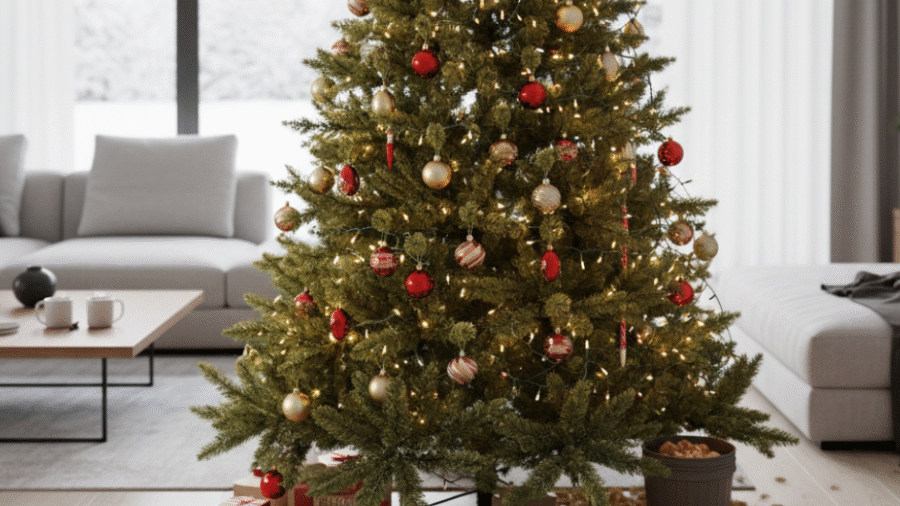The annual tradition of bringing home a Christmas tree is a hallmark of the holiday season for many families around the world. Yet, as awareness around environmental and health issues grows, the question of whether a real Christmas tree is good or bad has sparked considerable debate.
This comprehensive article examines the advantages and disadvantages of real Christmas trees—covering environmental impact, health considerations, aesthetics, and practical aspects—helping readers make informed choices for their holiday celebrations.
The Environmental Impact of Real Christmas Trees: Good or Bad?
The Good: Renewable and Biodegradable Resource
-
Real Christmas trees are cultivated on farms dedicated specifically to growing trees for the holiday season.
-
Each year, millions of trees are planted, providing a renewable and sustainable crop.
-
Trees absorb carbon dioxide during growth, helping offset emissions.
-
After use, real trees are 100% biodegradable; many recycling programs convert them into mulch or compost, enriching soil and reducing landfill waste.
-
The cultivation of Christmas trees also creates habitats for wildlife and contributes to rural economies.
The Bad: Resource Consumption and Environmental Concerns
-
Growing, harvesting, and transporting real trees consumes water, fertilizers, pesticides, and fuel.
-
Non-organic farming practices can introduce chemicals harmful to ecosystems.
-
Transportation, especially long-distance shipping, adds to the carbon footprint.
-
Improper disposal can lead to methane emissions in landfills if not recycled.
On balance, environmentally conscious consumers can minimize drawbacks by sourcing local, sustainably farmed trees and ensuring proper disposal.
Health Considerations: Benefits and Risks of Real Trees
The Good: Natural Air Benefits and Well-being
-
Real trees release phytoncides—natural volatile organic compounds with antimicrobial properties that can improve indoor air quality.
-
Their woody scent promotes stress relief and positive emotions, contributing to mental well-being.
-
Physical activity involved in selecting, setting up, and caring for a tree fosters family bonding and seasonal joy.
The Bad: Allergies and Safety Concerns
-
Real trees can carry mold spores, pollen, or dust triggering allergies or asthma in sensitive individuals.
-
Needle drop and debris can create cleanup challenges.
-
Dry trees, if not watered properly, pose a significant fire hazard.
Careful selection, watering, and cleaning can mitigate health risks while preserving benefits.
Aesthetic and Practical Benefits of Real Christmas Trees
-
Real trees offer authentic beauty and unique character; no two trees look exactly alike.
-
The traditional pine or fir scent is difficult to replicate authentically in artificial trees.
-
Decorating a real tree fosters annual family traditions.
-
Fresh trees support local farmers and strengthen community economies.
Practical Challenges of Real Trees
-
Real trees require daily watering and maintenance.
-
Needles drop and may necessitate frequent cleanup.
-
Trees have a limited indoor life span—usually 4-6 weeks maximum.
-
Setting up and disposing of the tree can be labor-intensive.
These practical aspects mean real trees may not suit everyone’s lifestyle or household circumstances.
Comparison to Artificial Trees
-
Artificial trees are reusable over many years, convenient, and needle-free.
-
However, they tend to have a higher carbon footprint initially due to plastic and metal manufacture.
-
Artificial trees lack the natural scent and feel of real trees.
-
They eventually end up in landfills since they are non-biodegradable.
Choosing between real and artificial involves weighing environmental impact, convenience, and personal preference.
How to Make Real Christmas Trees an Eco-Friendly Choice
-
Buy locally grown trees to reduce transportation emissions.
-
Opt for organic or sustainably farmed trees.
-
Use a sturdy stand with adequate water capacity to keep the tree fresh longer.
-
Support tree recycling programs that turn trees into mulch or compost.
-
Avoid plastic decorations and opt for natural or reusable ornaments.
-
Compost or chip your tree rather than sending it to landfill.
Read More: How Long Does an Artificial Christmas Tree Last? Understanding Durability and Longevity
Conclusion
The question of whether a real Christmas tree is good or bad depends largely on how it is sourced, cared for, and disposed of. Real trees offer environmental benefits as renewable, biodegradable resources that enhance holiday atmosphere and mental well-being. Their drawbacks—such as water and chemical use and potential health issues—can be mitigated with responsible practices.
For all who cherish tradition and authenticity, real trees represent a joyful, sustainable, and enriching holiday choice. Balancing care and consciousness allows the Christmas tree to remain an emblem of celebration while aligning with modern ecological and health values.



Add a Comment